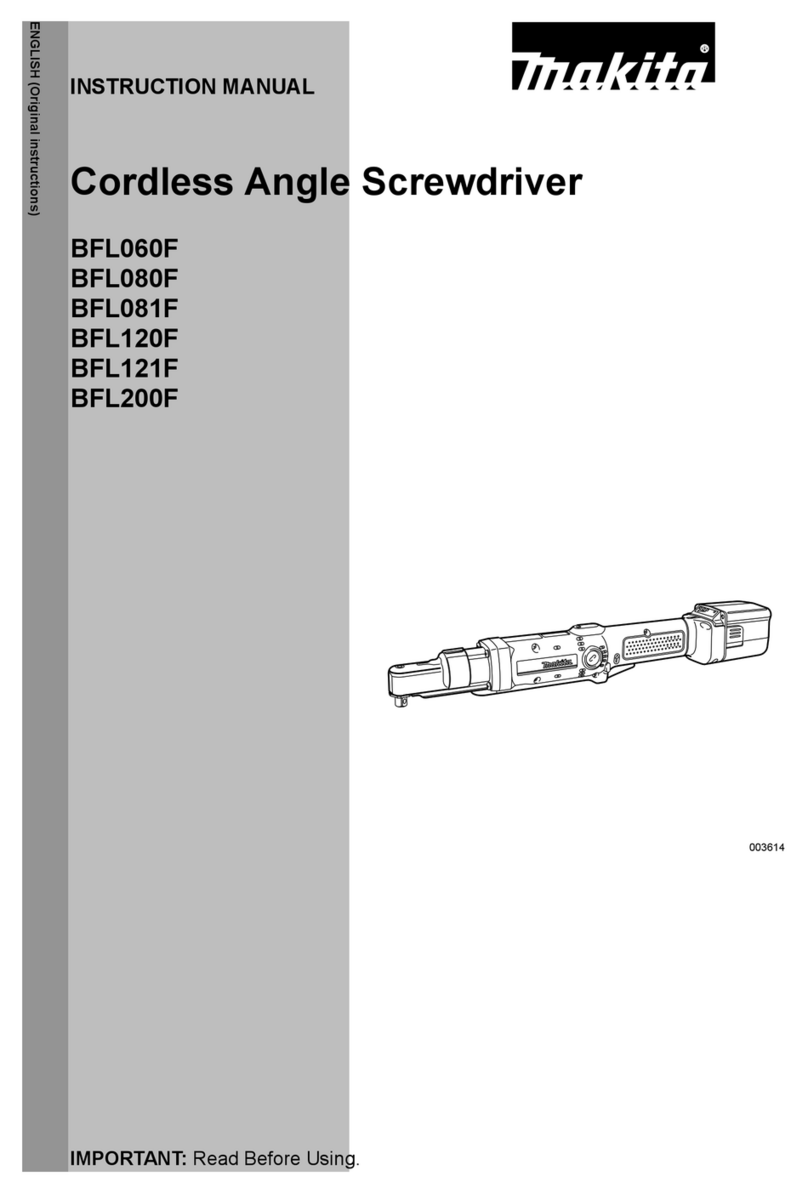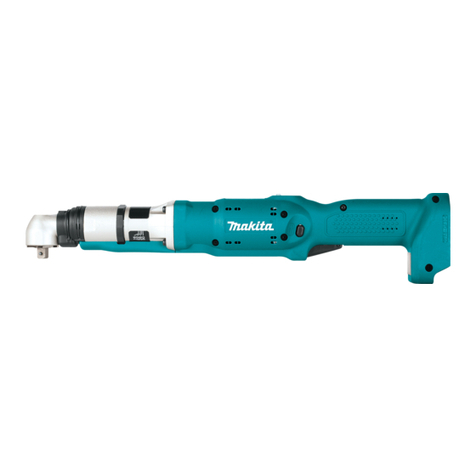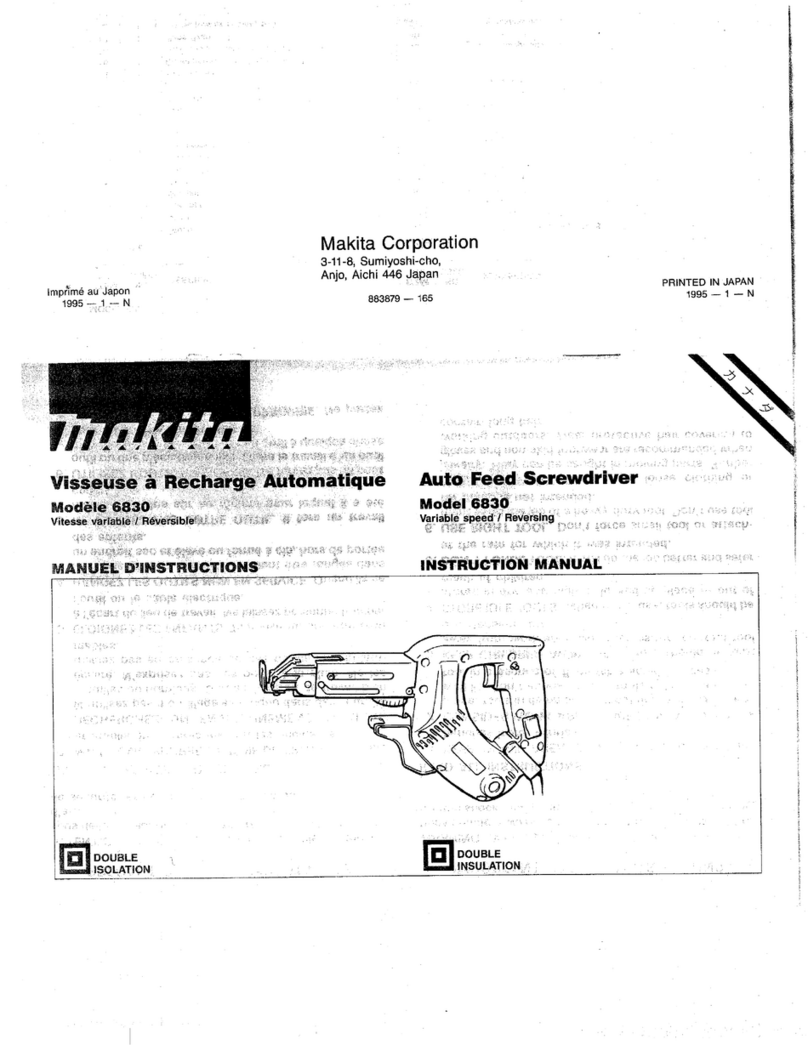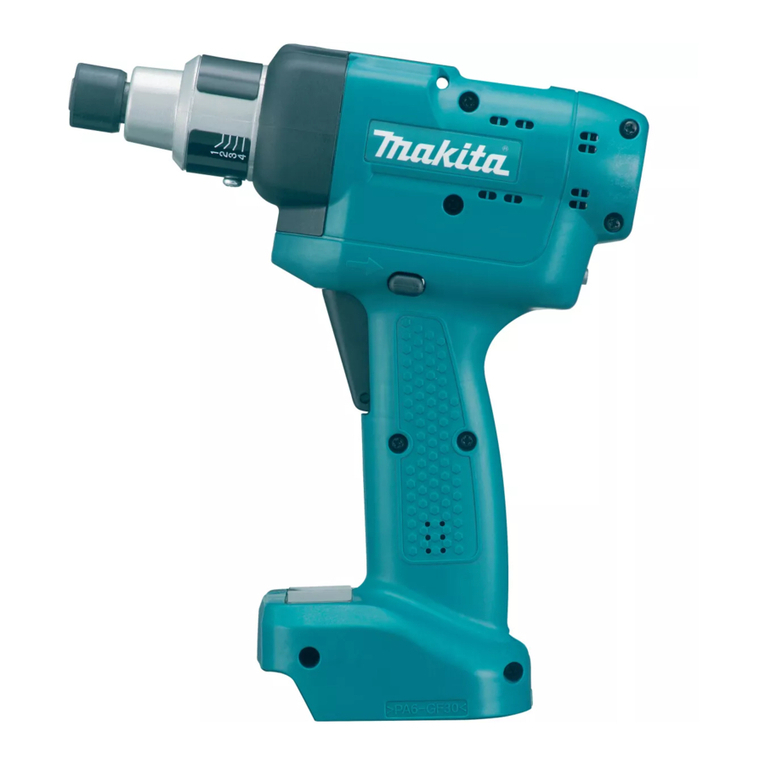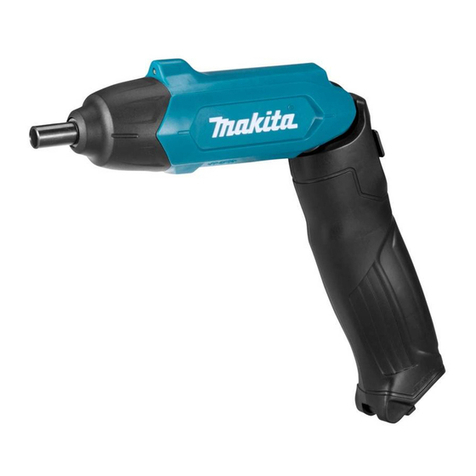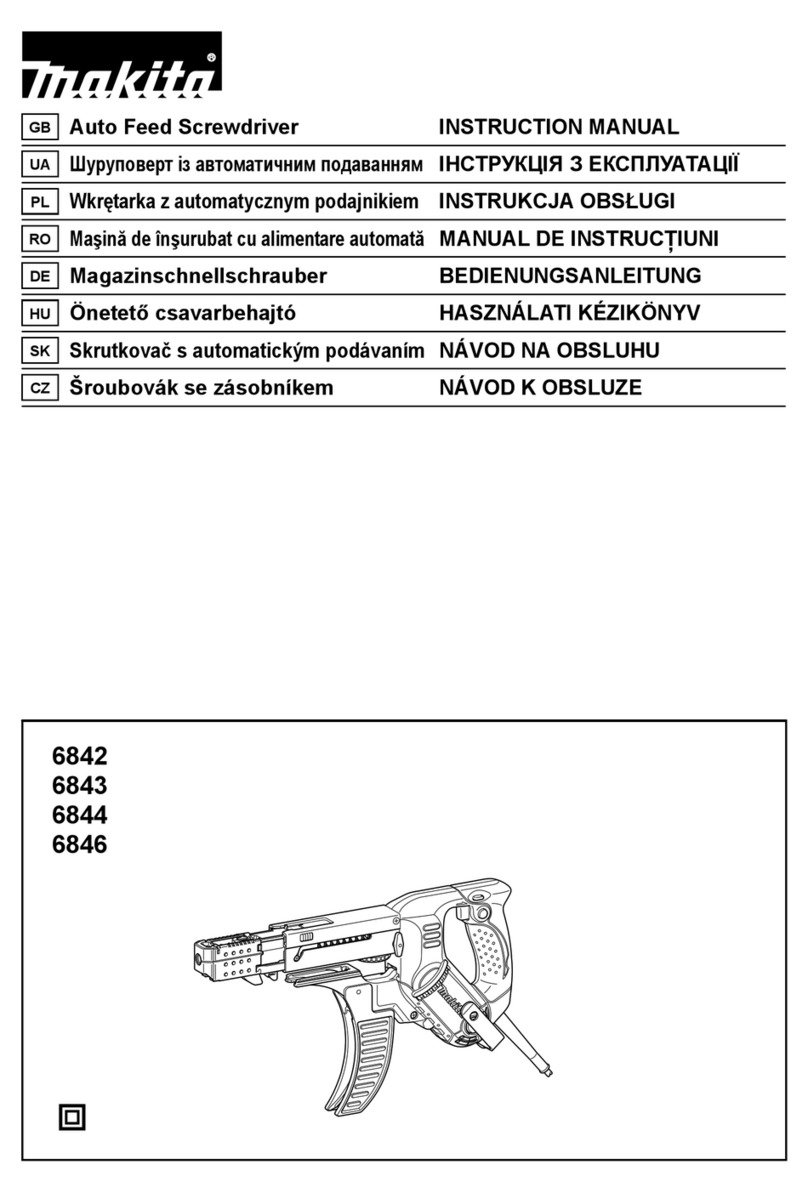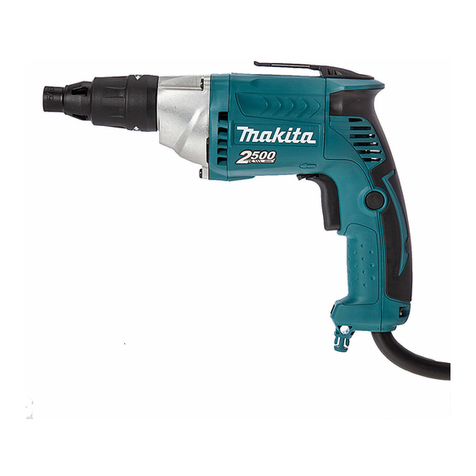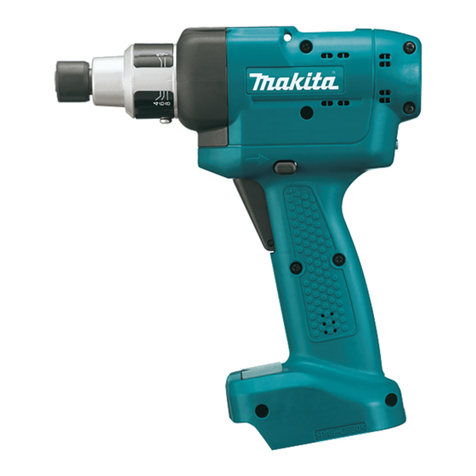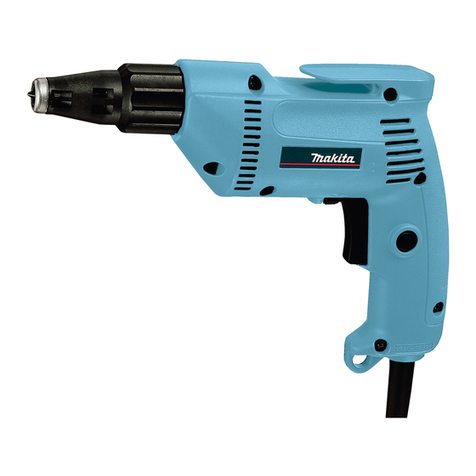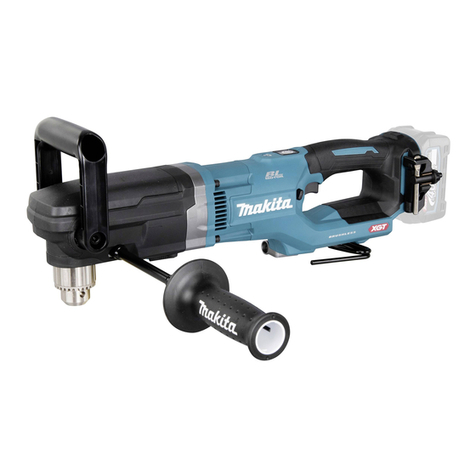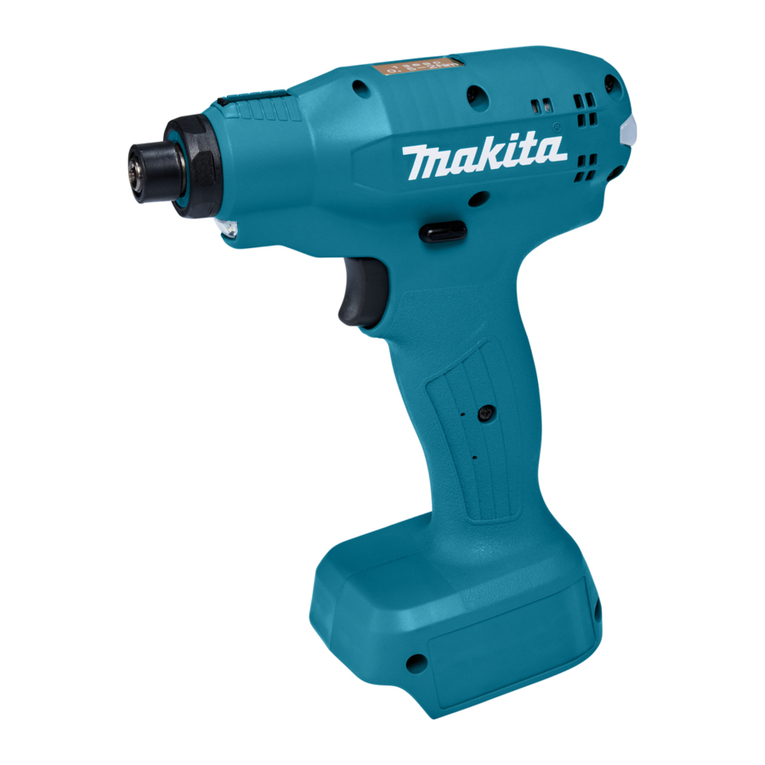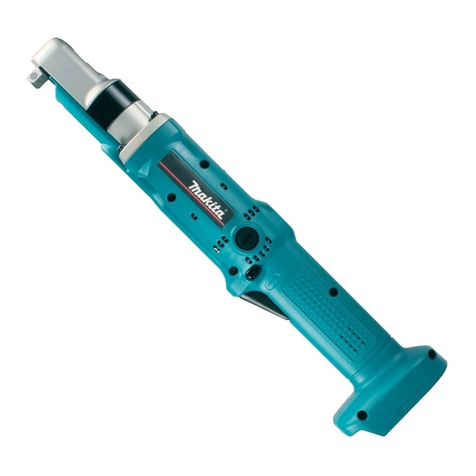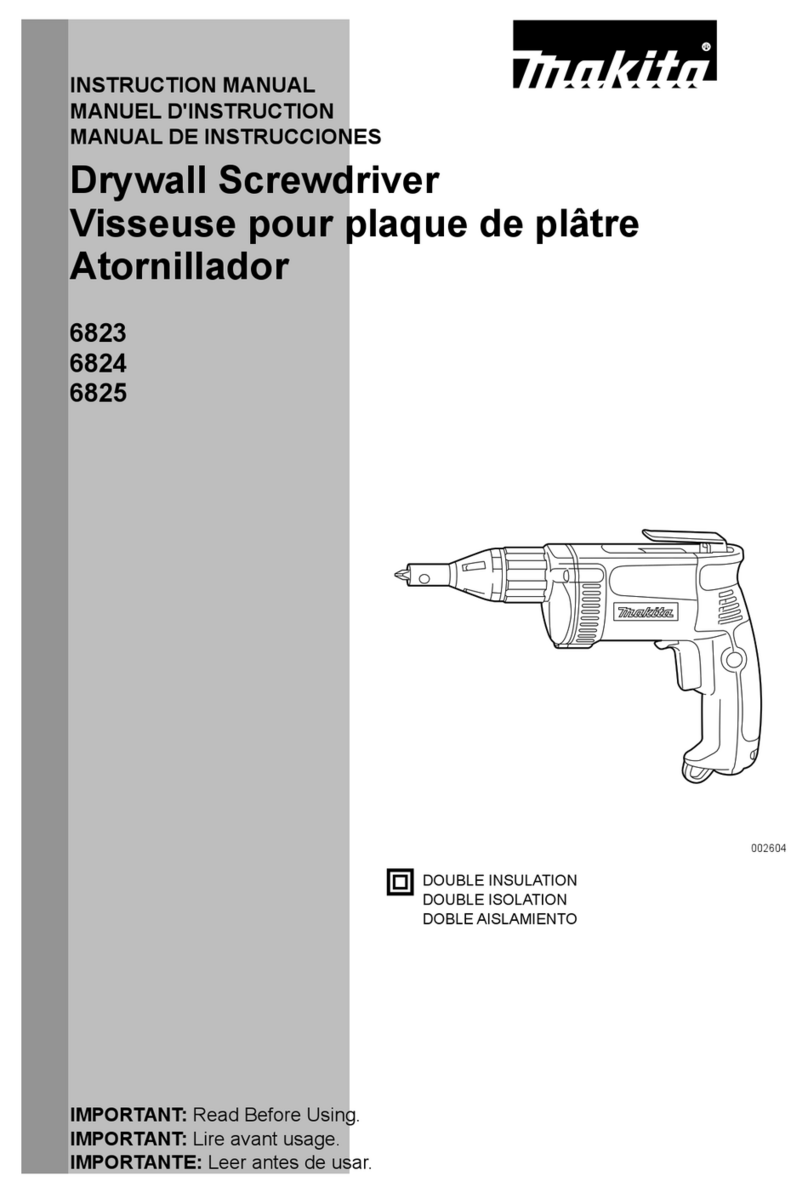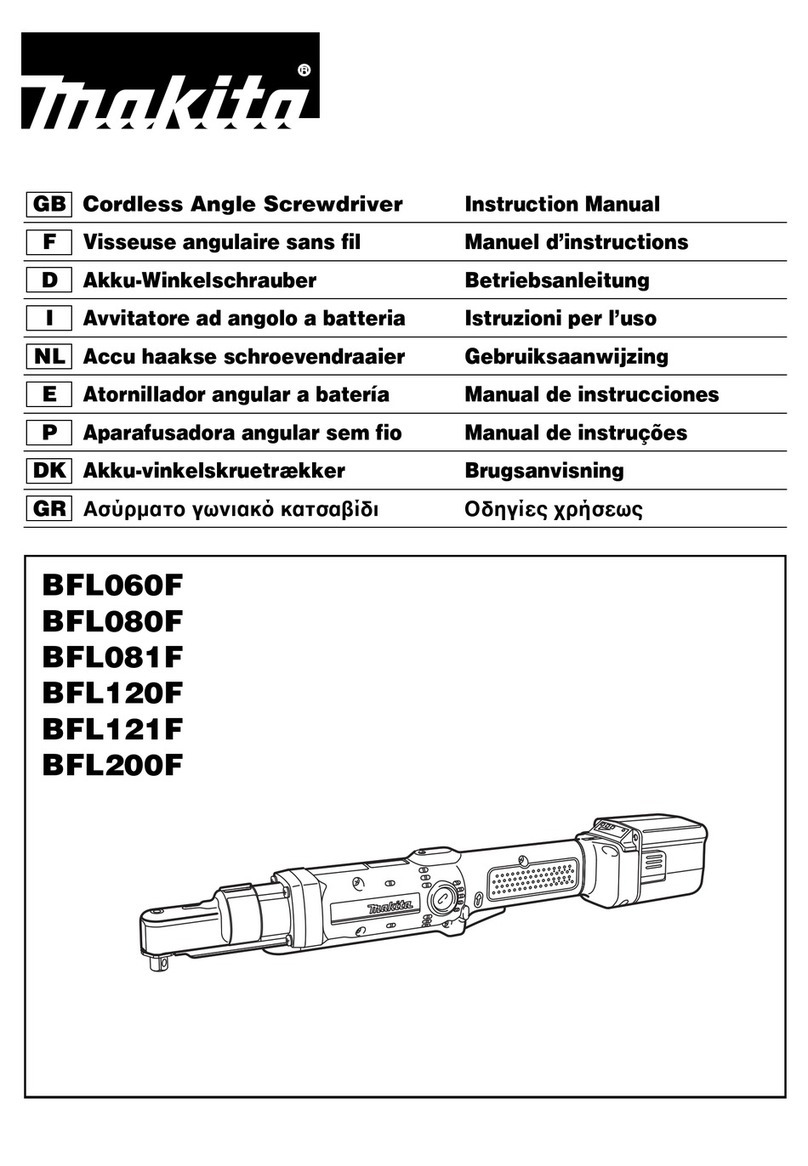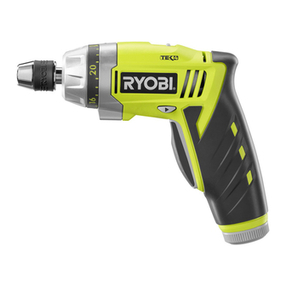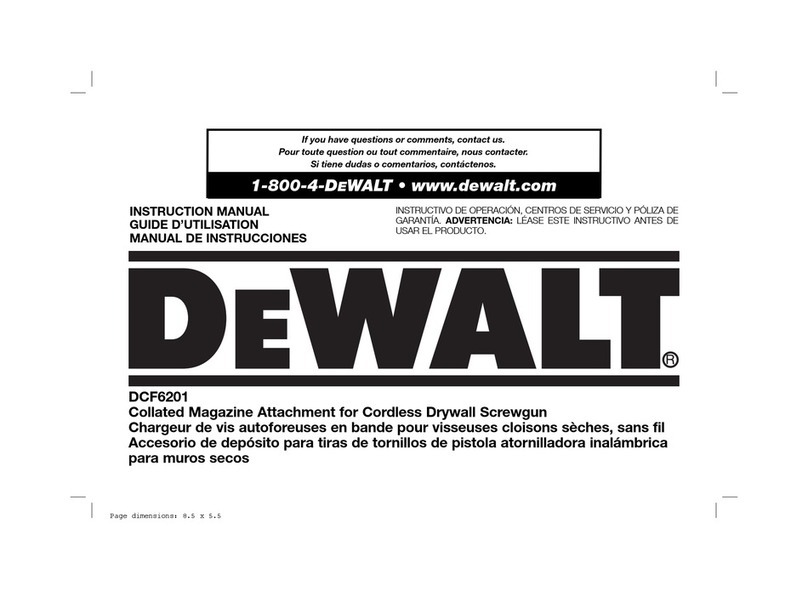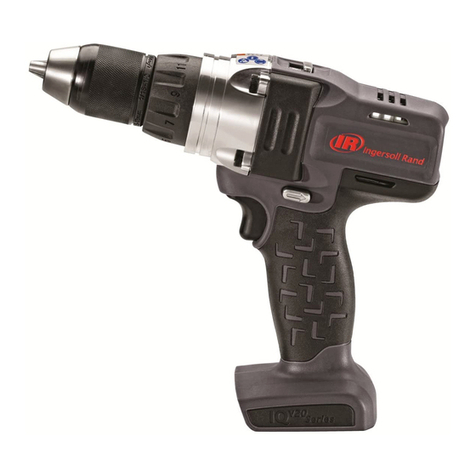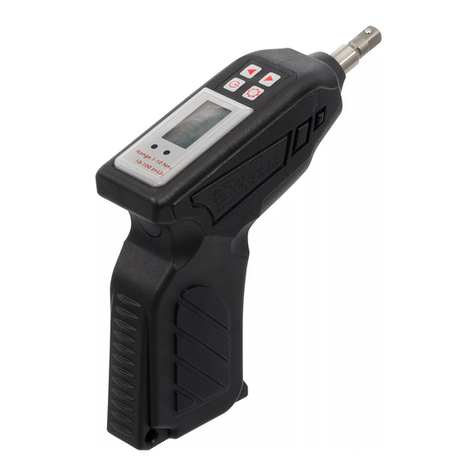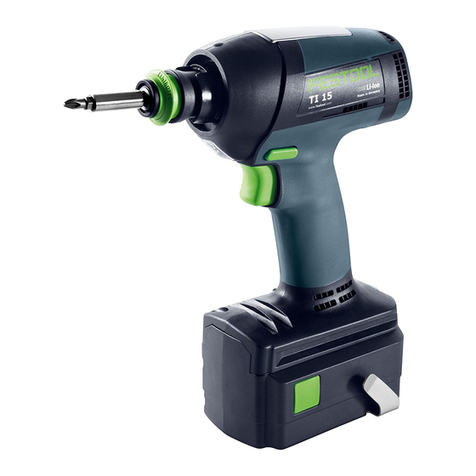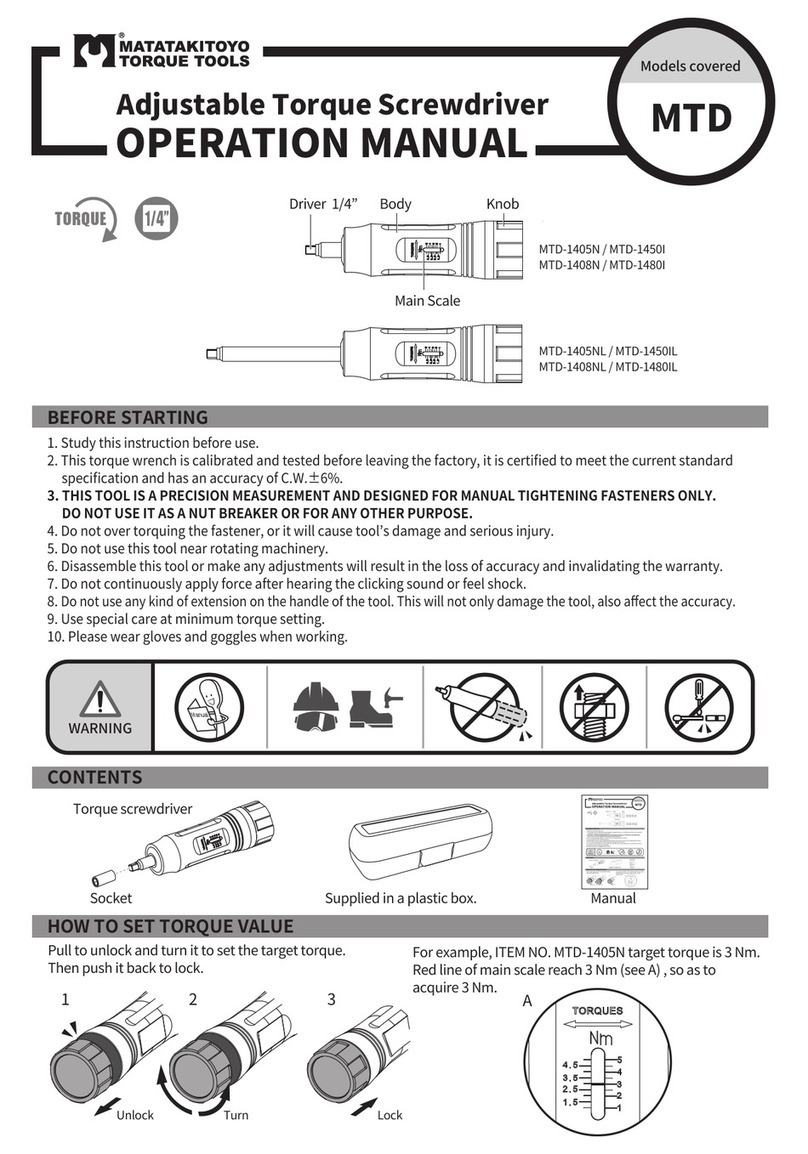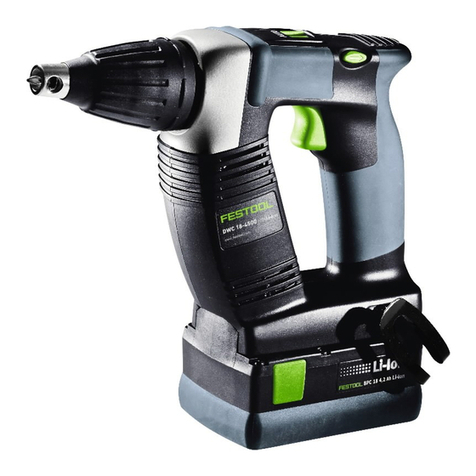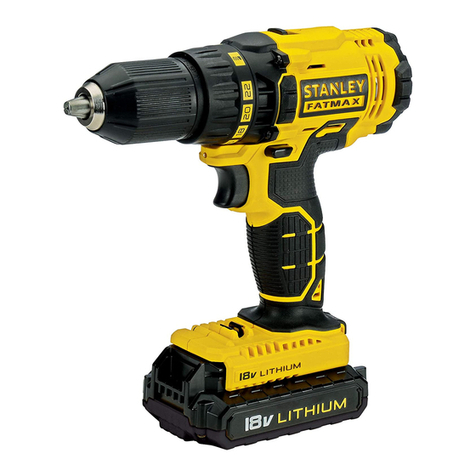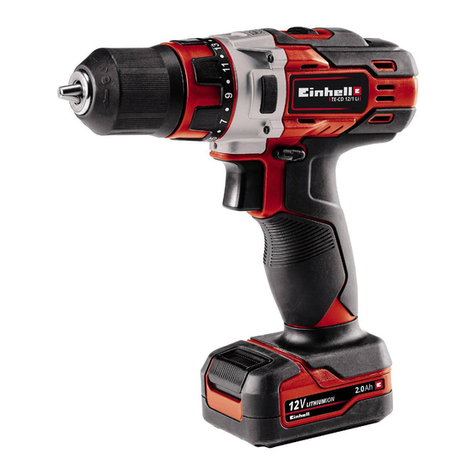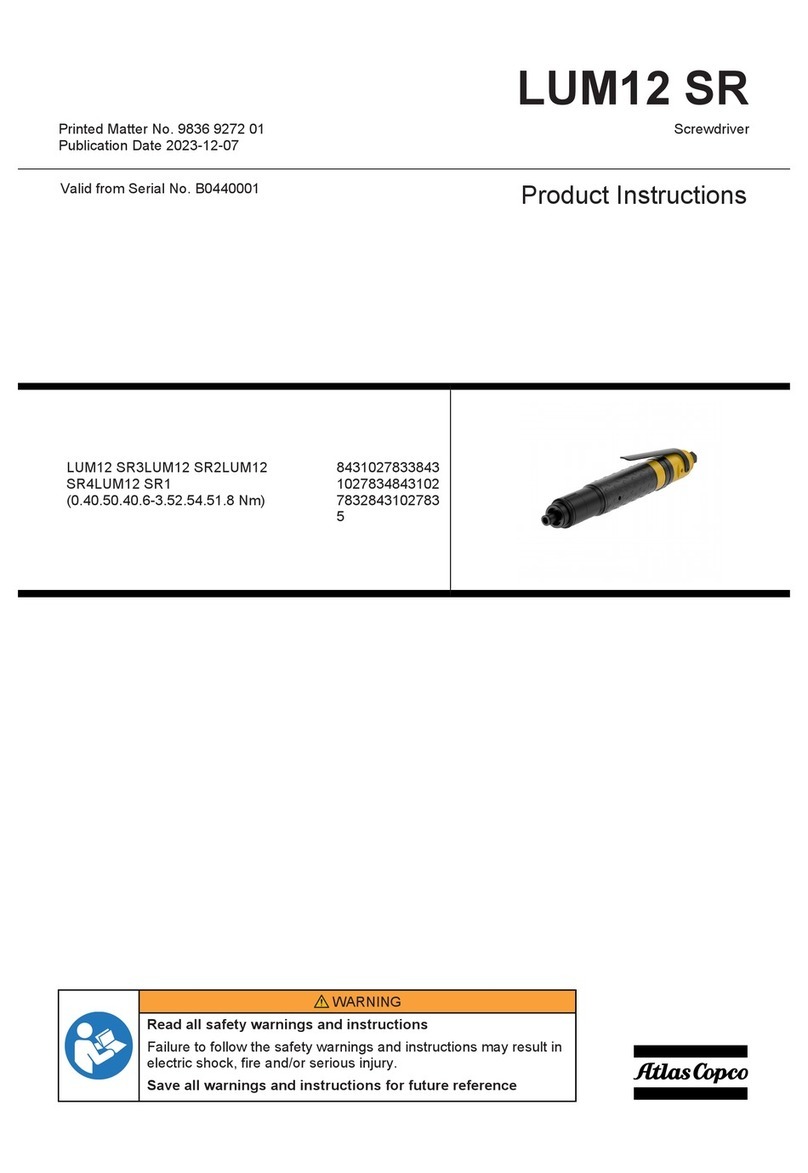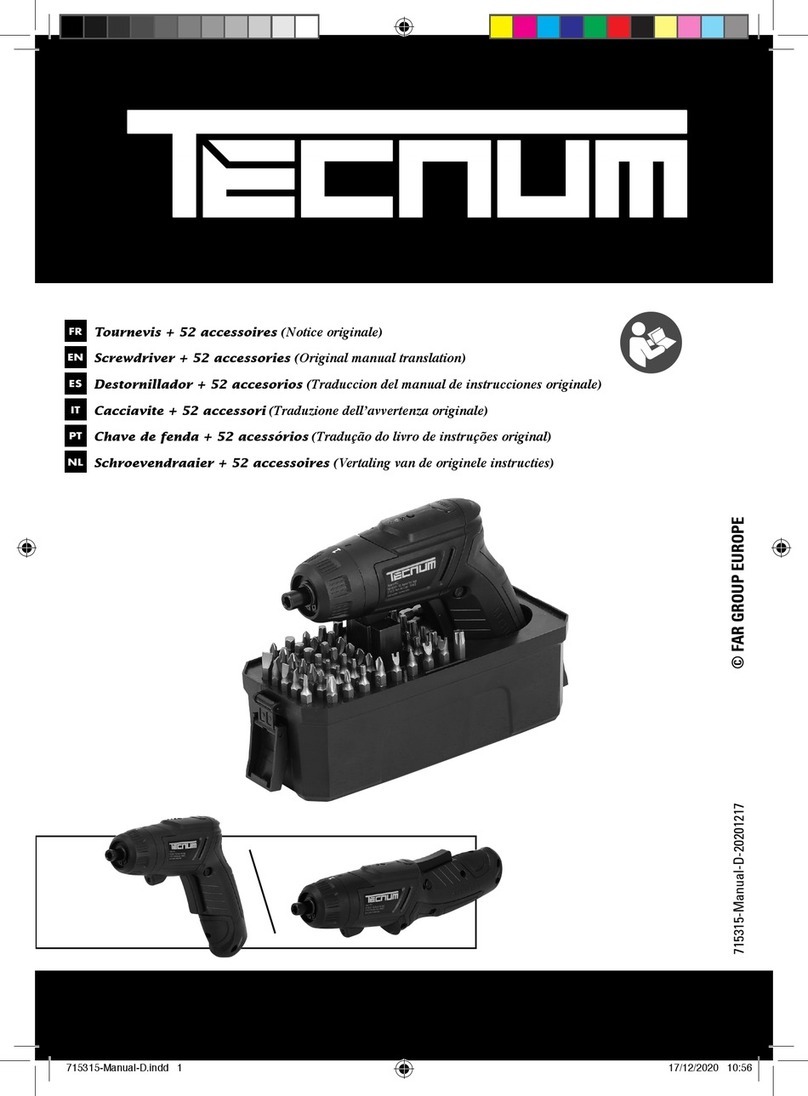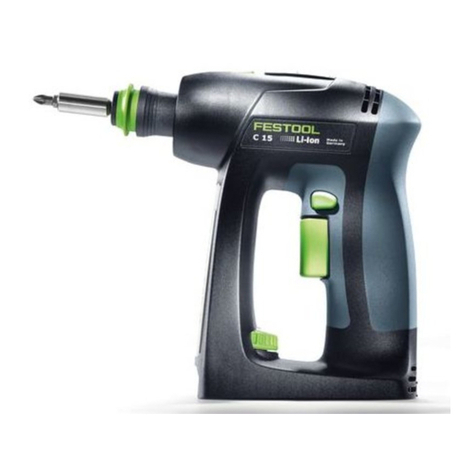
6ENGLISH
6. Do not store the tool and battery cartridge in
locations where the temperature may reach or
exceed 50 °C (122 °F).
7. Do not incinerate the battery cartridge even if
it is severely damaged or is completely worn
out. The battery cartridge can explode in a re.
8. Be careful not to drop or strike battery.
9. Do not use a damaged battery.
10. The contained lithium-ion batteries are subject
to the Dangerous Goods Legislation require-
ments.
For commercial transports e.g. by third parties,
forwarding agents, special requirement on pack-
aging and labeling must be observed.
For preparation of the item being shipped, consult-
ing an expert for hazardous material is required.
Please also observe possibly more detailed
national regulations.
Tape or mask off open contacts and pack up the
battery in such a manner that it cannot move
around in the packaging.
11. When disposing the battery cartridge, remove
it from the tool and dispose of it in a safe
place. Follow your local regulations relating to
disposal of battery.
12. Use the batteries only with the products
specied by Makita. Installing the batteries to
non-compliantproductsmayresultinare,exces-
sive heat, explosion, or leak of electrolyte.
13. If the tool is not used for a long period of time,
the battery must be removed from the tool.
SAVE THESE INSTRUCTIONS.
CAUTION: Only use genuine Makita batteries.
Use of non-genuine Makita batteries, or batteries that
have been altered, may result in the battery bursting
causingres,personalinjuryanddamage.Itwill
also void the Makita warranty for the Makita tool and
charger.
Tips for maintaining maximum
battery life
1. Charge the battery cartridge before completely
discharged. Always stop tool operation and
charge the battery cartridge when you notice
less tool power.
2. Never recharge a fully charged battery car-
tridge. Overcharging shortens the battery
service life.
3. Charge the battery cartridge with room tem-
perature at 10 °C - 40 °C (50 °F - 104 °F). Let
a hot battery cartridge cool down before
charging it.
4. Charge the battery cartridge if you do not use
it for a long period (more than six months).
FUNCTIONAL DESCRIPTION
CAUTION: Always be sure that the tool is
switched off and the battery cartridge is removed
before adjusting or checking function on the tool.
Installing or removing battery cartridge
CAUTION: Always switch off the tool before
installing or removing of the battery cartridge.
CAUTION:
Hold the tool and the battery cartridge
rmly when installing or removing battery cartridge.
Failuretoholdthetoolandthebatterycartridgermlymay
cause them to slip off your hands and result in damage to
the tool and battery cartridge and a personal injury.
►Fig.1: 1. Red indicator 2. Button 3. Battery cartridge
To remove the battery cartridge, slide it from the tool
while sliding the button on the front of the cartridge.
To install the battery cartridge, align the tongue on the battery car-
tridge with the groove in the housing and slip it into place. Insert it all
the way until it locks in place with a little click. If you can see the red
indicator on the upper side of the button, it is not locked completely.
CAUTION:
Always install the battery cartridge fully
until the red indicator cannot be seen. If not, it may accidentally
fall out of the tool, causing injury to you or someone around you.
CAUTION: Do not install the battery cartridge
forcibly. If the cartridge does not slide in easily, it is
not being inserted correctly.
Checking the remaining battery
capacity (BL1460A)
►Fig.2: 1. Indicator lamps 2. Check button
NOTE: Depending on the conditions of use and the
ambient temperature, the indication may differ slightly
from the actual capacity.
When charging
Whenthechargingbegins,therst(farleft)indicatinglamp
beginstoicker.Then,aschargingproceeds,theotherlamps
light, one after the other, to indicate the battery capacity.
NOTE:Iftheindicatorlampdoesnotturnonoricker
when charging, the battery may be faulty. In this case,
ask your local service center.
When using
When the tool is switched on, the lamps will light to
indicate the remaining battery capacity. When the tool is
switched off, the light goes out after approx. 5 seconds.
When pushing the check button with the tool switched off, the indi-
cator lamps turn on for approx. 5 seconds to show battery capacity.
Iftheorangelampickers,thetoolstopsbecauseoflittle
remaining battery capacity (Auto-stop mechanism). Charge the
battery cartridge or use a charged battery cartridge at this time.
When the tool is used with the battery that has not been
used for a long time and is switched on, no lamps may
light up. The tool stops because of little remaining bat-
tery capacity at this time. Charge the battery properly.

